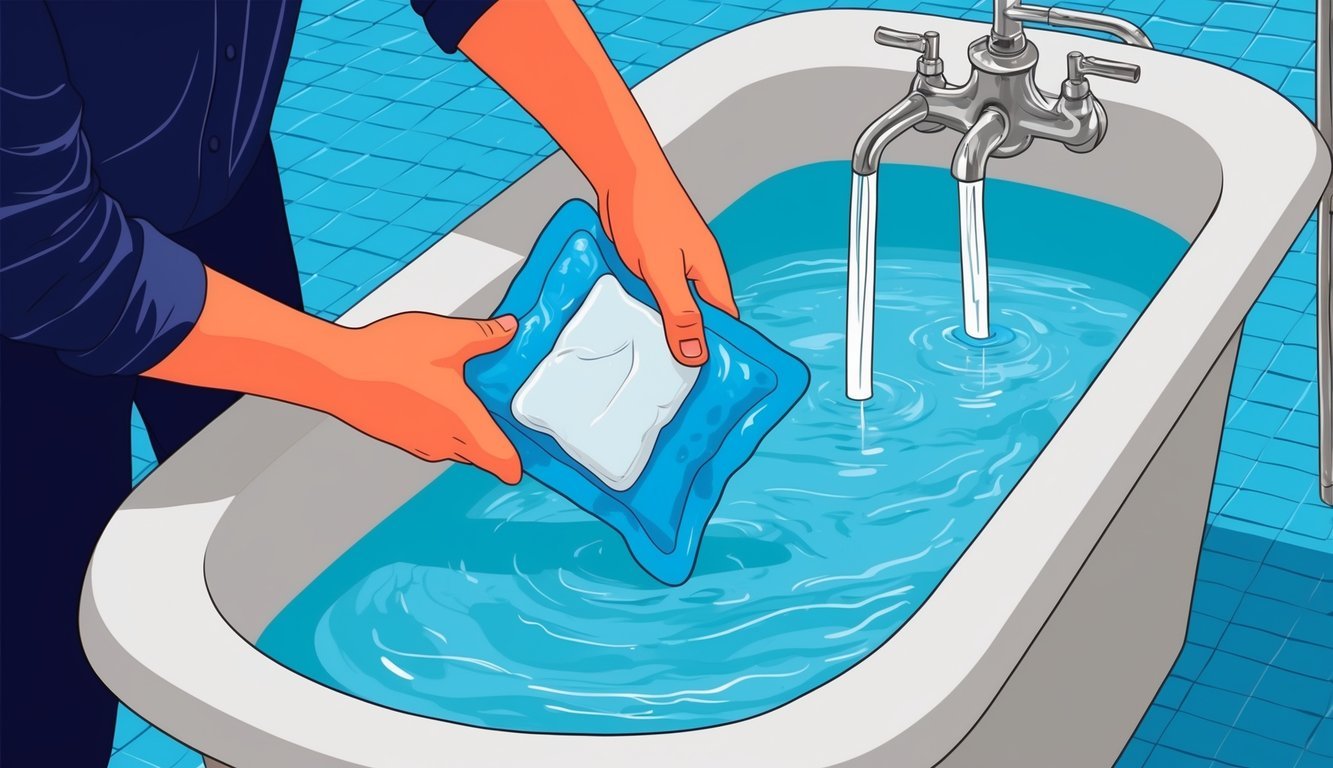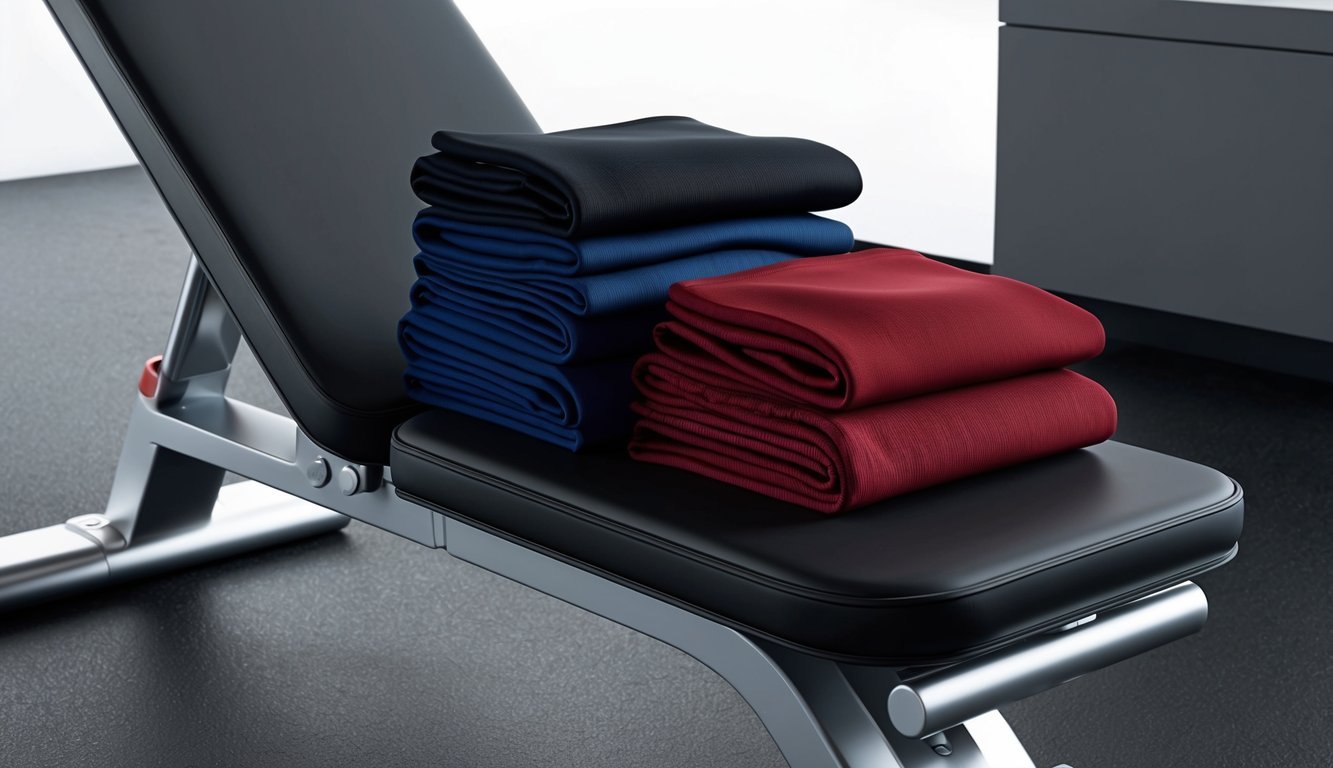After a tough workout, I often wonder how to speed up my recovery and get back to my routine.
Muscle recovery is crucial for improving performance and avoiding injury.
Incorporating the right practices can make a big difference.

I’ve learned that the way I treat my body post-exercise plays a significant role in how quickly I bounce back.
From hydration to stretching, there are several best practices that can help me recover faster and feel ready to tackle my next session.
Whether I’m lifting weights or going for a run, these tips can take my recovery game to the next level.
Hydration: Drink plenty of water
Staying hydrated is key for muscle recovery.
I make it a point to drink a lot of water before, during, and after my workouts.
When I sweat, I lose fluids that need to be replaced.
Drinking 1.5 liters of water for every kilogram of weight I lose during exercise helps me stay balanced.
It’s about three cups of fluid for each pound I shed.
Keeping track of my hydration helps me avoid fatigue and cramping.
Before my workouts, I aim to drink 2 to 3 cups of fluid about two hours prior.
This could be regular water or even a sports drink with electrolytes to give me a boost.
I also make sure to drink 8 to 16 ounces right before I start any intense activity.
During workouts, I try to sip on 6 to 12 ounces of water every 20 minutes.
After I’m done, replenishing my fluids is essential for recovery.
It’s simple: if I stay hydrated, I feel better and recover faster.
2) Stretching: Incorporate a cool-down routine
After a workout, I always find it helpful to take a few minutes for a cool-down routine.
Stretching is a key part of this process.
It helps my muscles relax and reduces the risk of stiffness.
I often start with light jogging or walking for about three to five minutes.
This gradually lowers my heart rate and prepares my body for stretching.
Once I feel ready, I move into deeper stretches.
One of my go-to stretches is the kneeling shin-quad stretch.
I kneel, keep the tops of my feet flat, and gently sit back on my legs.
Holding this for 20 to 30 seconds feels great on my quads.
I also like to incorporate hip and glute stretches.
Tucking my hip and squeezing my glutes stretches the front of my thighs.
Switching sides ensures both legs get attention.
Making time for stretching really helps me feel more refreshed.
It’s a simple practice that supports faster recovery and keeps me feeling good after workouts.
Foam Rolling: Release Muscle Tension
Foam rolling is one of my favorite ways to release muscle tension after a tough workout.
Using a foam roller can help me target specific areas that feel tight or sore.
I find that it really helps in reducing muscle soreness and speeding up recovery.
When I foam roll, I take my time, spending about 30 seconds to a minute on each muscle group.
I roll slowly, aiming for an inch per second, which helps me pinpoint tender spots.
When I find one, I stop and hold for around 20 seconds to let the muscle relax.
Incorporating foam rolling into my routine a few times a week has maintained my muscle health.
I’ve noticed that it improves my flexibility, too.
It’s especially beneficial for my back, legs, and shoulders, which tend to carry the most tension after workouts.
I make it a habit to foam roll even on rest days.
It’s a simple practice that goes a long way in helping me feel better and recover faster.
Plus, it just feels good!
4) Sleep: Aim for 7-9 hours

Getting enough sleep is a game changer for muscle recovery.
I aim for 7 to 9 hours each night.
This duration allows my body to repair and rebuild muscle tissue effectively.
During sleep, my body releases important hormones that promote growth and recovery.
I’ve noticed that if I don’t hit that mark, I feel more sluggish and I don’t recover as well from my workouts.
Quality sleep helps reduce inflammation and relaxes my muscles.
This relaxation is crucial for releasing tension and aiding recovery.
I try to keep a consistent sleep schedule, which helps my body know when to wind down.
If life gets busy, I might sneak in a short nap during the day.
This quick rest can make a big difference.
Just a 20-30 minute nap revitalizes me without ruining my nighttime sleep.
Remember that individual needs can vary, so listen to your body.
If I’m feeling tired, I know I need to prioritize sleep to keep my muscle recovery on track.
5) Nutrition: Eat a balanced diet with protein

Eating a balanced diet is essential for muscle recovery.
I focus on incorporating a good amount of protein into my meals.
Protein helps repair the tiny muscle tears that occur during workouts.
Fatty fish, like salmon and sardines, are my go-to sources.
They not only provide protein but also omega-3 fatty acids, which can help reduce inflammation.
I try to include these in my meals regularly.
I also make sure to eat other protein-rich foods, such as lean meats, eggs, and legumes.
Plant-based options like lentils and beans are great too, especially for variety.
Including carbohydrates is important for energy, so I pair my protein with whole grains and plenty of fruits and vegetables.
This combination supports overall recovery and keeps my energy levels up.
Staying hydrated is another key aspect of nutrition.
I always drink enough water, as it’s crucial for muscle function and recovery.
Balancing my diet this way really helps me feel better post-workout.
6) Active Recovery: Try walking or cycling

Active recovery is something I find super helpful when my muscles feel sore after a tough workout.
Walking is a great low-impact option that keeps me moving without overstressing my body.
A nice 20 to 30-minute walk can do wonders for easing muscle tightness.
Cycling is another fantastic choice.
I enjoy hopping on my bike for a leisurely ride.
It’s gentle but still gets my blood flowing, which helps with recovery.
Both activities are perfect for days when I need to stay active without hitting the gym hard.
They allow my body to recuperate while still engaging in some form of exercise.
Using these active recovery methods keeps my routine varied and enjoyable.
I really appreciate how these simple activities help me recover faster and prepare for my next workout.
They allow my muscles to relax and reduce soreness, making it easier to stay consistent with my training.
Incorporating the best postworkout recovery strategies, such as stretching and proper hydration, has significantly improved my performance.
By prioritizing recovery, I feel stronger and more energized for each workout session.
7) Rest Days: Schedule regular rest days

I can’t stress enough how important rest days are for muscle recovery.
They give my body the chance to repair and grow stronger after intense workouts.
Without regular rest, I risk overtraining and fatigue.
I like to schedule at least one or two rest days each week.
This isn’t about being lazy; it’s about letting my muscles recover properly.
During these days, I might engage in low-intensity activities, like walking or yoga, to keep moving without putting too much strain on myself.
It’s interesting how much quality sleep impacts recovery.
I aim for 7-9 hours of sleep each night to help my muscles restore and prepare for the next workout session.
Listening to my body is crucial.
If I’m feeling sore or fatigued, I don’t hesitate to take an extra rest day.
By doing this, I ensure that I can push harder and perform better during my training sessions.
Rest days are not just a break; they’re an essential part of my training routine.
8) Cold Therapy: Use Ice Packs or Cold Baths

I’ve found that using cold therapy can be a game changer for muscle recovery.
Ice packs or cold baths help reduce swelling and alleviate pain, especially right after a tough workout.
When I have a muscle strain or after a rigorous training session, I go for ice packs.
They’re easy to apply and target specific areas effectively.
I usually keep them on for about 15-20 minutes.
For something more immersive, I sometimes hop into an ice bath.
It sounds intense, but it feels refreshing.
Cold water can help manage muscle soreness and promote recovery.
I’ve learned that timing is key.
It’s best to use cold therapy immediately after an injury.
After a few days, I switch my focus to other recovery methods, as prolonged cold exposure may slow the healing process.
In my experience, alternating cold therapy with other recovery techniques can lead to the best results.
Each time I use cold therapy, I notice a significant difference in how my muscles feel.
9) Compression Gear: Wear compression clothing

I’ve started incorporating compression gear into my workout routine, and it has made a noticeable difference.
Wearing compression clothing during and after exercise helps promote blood flow.
This increase in circulation can assist in delivering oxygen and nutrients to my muscles.
I find that these garments also reduce muscle vibration.
This reduction can help minimize fatigue and soreness after intense workouts.
Plus, the snug fit keeps my muscles warm, which is great during cold-weather sessions.
There are various types of compression gear available, designed for different body areas.
Whether it’s sleeves for my arms or tights for my legs, there’s something for everyone.
Listening to my body is key, and I make sure to pick the right gear for my needs.
Many people swear by compression wear for its role in recovery too.
The lighter feeling and support from the fabric can boost comfort as I unwind post-workout.
I’ve noticed less pain and swelling on days I wear compression gear, which surely helps me get back to my routine faster.
10) Massage: Book a Professional Massage

After a tough workout, I find that booking a professional massage can really help speed up my recovery.
A skilled massage therapist knows how to target sore muscles and improve blood flow.
I usually opt for a lighter massage technique, such as a Swedish or sports massage.
These types are gentler and suitable after heavy training sessions.
Deep tissue massages can be intense and might not be ideal immediately post-workout due to muscle sensitivity.
Timing is important.
I try to schedule my massage within a day or two after exercising.
This helps relieve tightness and stiffness while promoting relaxation.
Vibration massage is also an option for quicker at-home relief.
It’s easy to use and can produce great results.
However, nothing beats the experience of a professional working on my muscles.
Incorporating massage into my recovery routine has made a difference in how quickly I bounce back.
It’s a treat for both my body and mind.
The Science Behind Muscle Recovery
Muscle recovery is a complex process influenced by various physiological mechanisms.
Understanding how muscle fatigue occurs and the role of nutrients can significantly enhance recovery strategies.
Understanding Muscle Fatigue
When I push my body during workouts, several factors cause muscle fatigue.
One primary cause is the depletion of energy stores, mainly glycogen, which my muscles rely on for fuel.
Additionally, during exercise, I produce lactate, which can contribute to that burning sensation.
After intense workouts, my muscles also experience microscopic damage, leading to delayed onset muscle soreness (DOMS).
This damage triggers an inflammatory response, prompting a cascade of repair processes.
A few days later, I notice improvements in strength and performance, indicating that muscle recovery is underway.
Monitoring signs like resting heart rate can help me gauge my recovery status over the following days.
Role of Nutrients in Recovery
Nutrition plays a pivotal role in muscle recovery.
After workouts, I prioritize protein for muscle repair and synthesis.
Consuming about 20-30 grams of high-quality protein within 30 minutes to 2 hours post-exercise is beneficial.
Carbohydrates also deserve attention.
They help replenish glycogen stores depleted during workouts.
I usually aim for a combination of both protein and carbs in a post-workout meal, like a protein shake with a banana.
Moreover, hydration is crucial.
Water helps transport nutrients and maintains cellular functions.
Electrolyte-rich beverages can also aid in replenishing lost minerals during strenuous activities.
Keeping a balanced intake helps me recover faster and return to my workouts stronger.
Incorporating Rest and Sleep
Rest and sleep play crucial roles in muscle recovery.
Taking the time to rest can enhance performance and help prevent injuries.
Here’s what I’ve found about the importance of rest days and how sleep impacts recovery.
Importance of Rest Days
Rest days are essential for giving my muscles the chance to repair and grow.
Engaging in high-intensity workouts without proper rest can lead to fatigue and setbacks.
Keeping to a schedule of rest allows my body to function at its best.
I like to incorporate light activities on my rest days, including walking, yoga, or stretching.
This keeps me active without overexerting myself.
Also, it’s important to avoid training the same muscle group on consecutive days, especially after heavy lifting.
For muscle building, ideally, I’ll give my body at least 24 to 72 hours of rest, depending on workout intensity.
This practice helps maintain my strength while promoting recovery.
How Sleep Affects Recovery
Sleep is when much of our recovery takes place.
Research suggests that adults need 7 to 9 hours of sleep each night for optimal recovery.
When we skimp on sleep, we can feel the effects in our performance and recovery times.
During sleep, our body releases growth hormone, which aids in muscle growth and repair.
Moreover, quality sleep can help regulate cortisol levels, a stress hormone that, in excess, might impede recovery.
To improve my sleep, I follow a few tips.
I maintain a consistent sleep schedule, create a dark and cool sleep environment, and limit screen time before bed.
This routine not only enhances my recovery but also bolsters my mental health.

